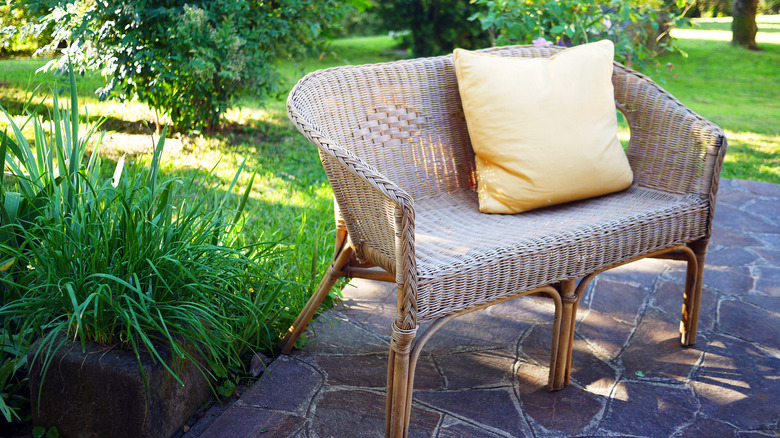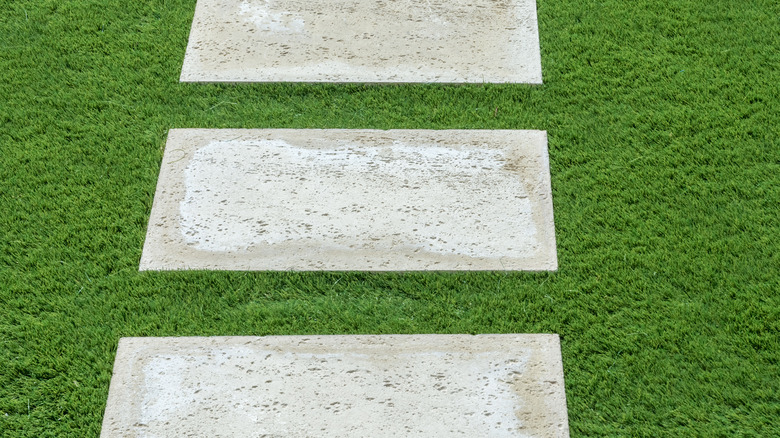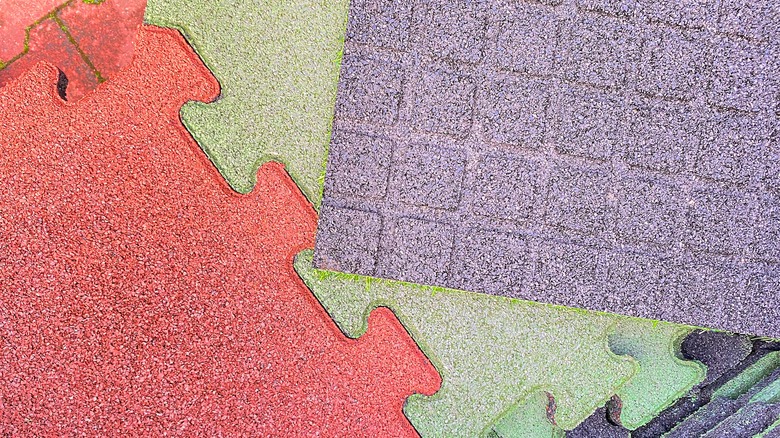Tips For Installing Outdoor Flooring Over Your Grass Backyard
We may receive a commission on purchases made from links.
A lush, verdant turf backyard is nice to have, but there are times that warrant some type of flooring to go onto the grass. Perhaps you're hosting an event and don't want hordes of people to trample the turf. Or, you want to create a few walkways so you don't get your feet wet when walking around the backyard after it rains. In either scenario, installing outdoor flooring over a grassy yard is not a problematic or challenging task. As long as you're equipped with the right flooring product and a few handy tips, you can have the flooring down in a few hours or less.
Now, there are two types of outdoor flooring you should consider for an uneven surface like grass, and they demand slightly different approaches. For example, if you're laying down pavers or outdoor tiles, you'll have to strip the top soil and create a crushed stone base for the tiles. On the other hand, temporary flooring options like flexible PVC tiles generally don't require a base, so you can get away with simply mowing your grass before installation. Below, we'll walk you through a few essential tips for installing both types of flooring on the grass in your backyard.
Tips for installing pavers or tiles over a grassy area
Unless you're installing temporary flooring for an event (on which we'll touch further down), you won't lay the flooring material directly onto the grass. You'll need to strip the top layer of the turf ahead of laying the pavers or tiles. Begin by clearing the space of all grass and debris using a spade or sod cutter. Once the grass is gone, you'll want to dig up about 2 inches of the topsoil, too. This way, the pavers or tiles will sit flush or below the surface of the surrounding grade and you won't hit them with your lawnmower when cutting grass (or with your foot when walking in the garden).
After excavating the topsoil, ensure the surface you just created is perfectly even with a level, then compact the soil using a tamper tool. Next, to keep weeds from poking through the gaps between the pavers, lay down landscaping fabric like this one for $73 from The Home Depot to create a weed barrier. Now, add a layer of gravel to the newly excavated area, distribute it evenly, and compact it once again.
Before laying the tiles, you must install edging along the perimeter of the surface. You can use a landscape edging product like this one for $42 from Lowe's for the job. Finally, when laying the flooring down, use a rubber mallet to hammer them in place, making sure all surfaces are even.
How to install temporary outdoor flooring over grass
If you're hosting an event in the backyard and need to put in a temporary surface, you don't need to remove the turf. But since you won't be leveling the substrate, you need flexible tiles that easily fit the ground profile. PVC tiles like these ones from Greatmats ($4 each) are designed to be flexible, so they'll fit just fine even if your backyard isn't perfectly level.
While removing grass completely isn't necessary before laying down temporary tiles, mowing the turf is a must. Overgrown grass can make the surface far too uneven, and you run the risk of tall grass peeking through the gaps between the pavers. To make the floor surface as level as possible and reduce the number of grass blades sneaking through the gaps, trim the overgrown grass right before placing the temporary tiles. To make the substrate as smooth as possible for the tiles, you can lay down landscaping fabric on top of the grass first.
If you use an interlocking tile system like the one from Greatmats, or similar alternatives from stores like The Home Depot and Lowe's, you'll notice that some tiles have pegs around their edges, while others have holes. All you need to do is align the pegs with the holes and press them together to lock the tiles. The exact configuration of the interlocking system may differ with the brand, so be sure to follow the manufacturer's instructions while installing.


